Basics: Measurements
It’s a sad fact that math and numbers are an integral part of sewing. If you’re new to sewing, you might struggle with this. Let’s take a closer look at the most common measurements.
Just for reference, my quilter’s ruler is two inches wide and eighteen inches long, with every sixteenth of an inch marked, across both the length and the width of the ruler. It’s transparent, which makes it easy to use for measuring two directions at the same time. Because it’s only slightly flexible, it’s best used for measuring flat objects, like patterns and trims.
My regular measuring tape is 5/8″ wide and 60″ long, while my retractable measuring tape is just 3/8″ wide. Because they’re opaque and only have markings along one edge, you cannot use a measuring tape to measure both width and length at the same time. They are, however, extremely flexible, which means they work great for measuring around your body—something a ruler cannot do. The retractable measuring tape’s narrow size makes it especially ideal for measuring children and dolls.
So what do all these lines represent?
An inch is divided into halves, quarters, eighths, and sixteenths. The longest and thickest lines will be inches. These are clearly marked, so you can easily tell whether something is one inch, or eighteen inches, or something in between.
Half-inch marks also stand out, so you can easily find them. On a measuring tape, they’ll be shorter than inch marks, but longer than the other measurements. On a quilter’s ruler, they’ll be slightly thinner than inch marks, but thicker than the other lines.
Once you get into quarter-inches and below, it becomes trickier, because the measurements are so small. Remember, there are four quarters to an inch. On a ruler, the quarter marks will be thinner than half-inch marks.
What about eighths? They’re marked by the smaller lines between the quarter-inch lines.
Sixteenths are the smallest most rulers or measuring tapes will show. On a ruler, they’re the thin lines between each eighth of an inch. On a measuring tape, they’ll be the shortest lines.
Common Measurements
There are several measurements that are good to learn by sight, so you can easily fold or stitch the fabric that precise amount. Here are the most common measurements found in sewing.
- 1/8″
- 3/16″
- 1/4″
- 3/8″
- 1/2″
- 5/8″
- 3/4″
- 7/8″
- 1″
If you find it impossible to learn all of these, look for a quilter’s measuring gauge. Not a sliding gauge, but the kind that looks like a squared-off star.
Each square protrusion is a different width, so you just need to find the one that’s the measurement you need. For example, if you need a quarter-inch, flip it to the protrusion marked 1/4″ and hold it against your fabric to mark or fold that exact width.
Because the gauge is metal, you can also use it while pressing a hem. Just be careful—it may get hot!
So, there you have it! Hopefully, we’ve taken some of the mystery out of measuring.
~~*~~
Looking for more sewing help? Check the Basics menu for plenty of beginner friendly articles. For more advanced techniques, look under Tutorials and Articles.

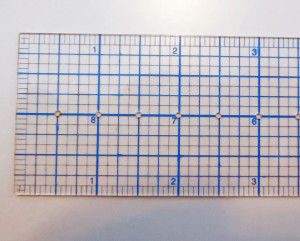
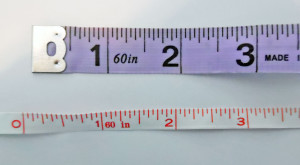
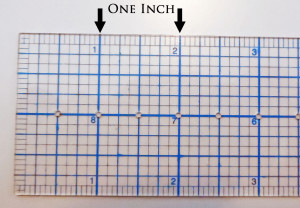
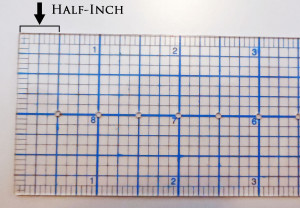
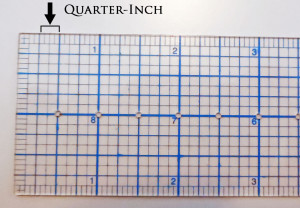
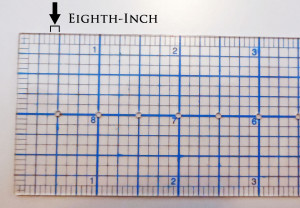
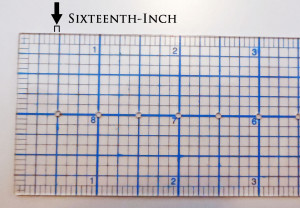
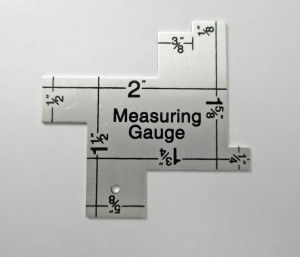
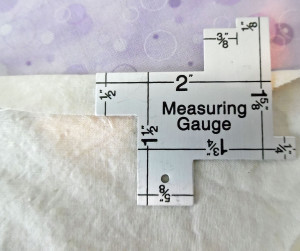
2 Responses to Basics: Measurements